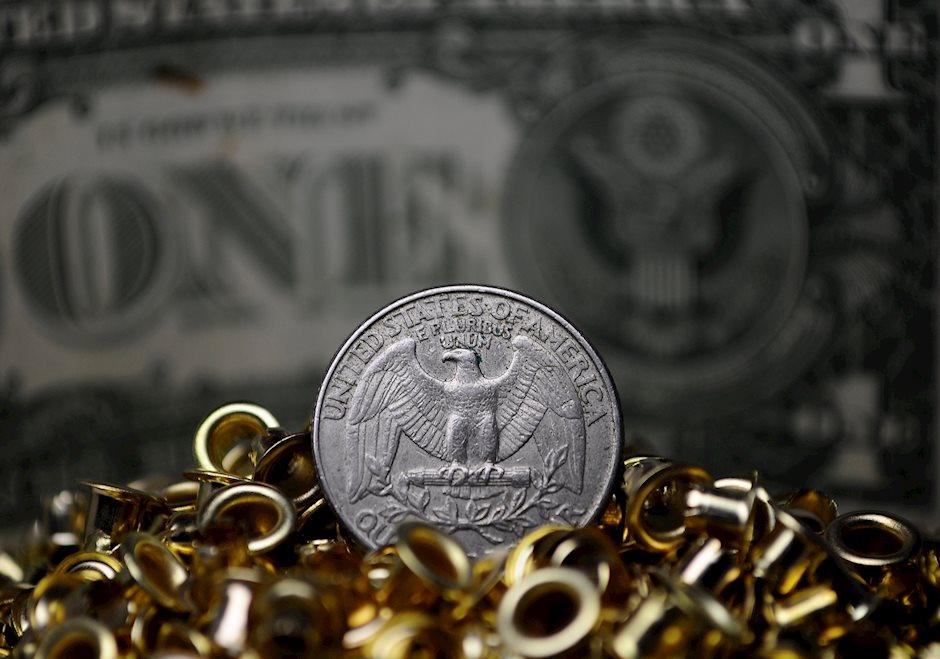US Dollar retreats off the highs with uptick Continuing Claims taking the wind out of the rally
- The US Dollar falls flat after its two-day rally.
- Traders are left behing clueless on what to do next with this very mixed data.
- The US Dollar Index broke fresh highs for March, though falls back at opening levels.

The US Dollar (USD) retreats from its earlier fresh highs for March after the Greenback rallied on comments from Fed Board Member Christopher Waller who pulled the plug on a June interest-rate cut. The Greenback is rolling through the markets and is up against every major G20 peer. Markets are heading into the direction of fewer and later rate cuts while the economy and inflation flair up.
The very packed economic calendar for this Thursday is leaving its marks with the Continuing claims contradicting the upbeat US Gross Domestic Product print. This makes traders nervous with data points diverging and not painting a clear picture. More data from the Unversity of Michigan numbers and Purchase Managers Index from Chicago does not look to bring any clarity for now.
Daily digest market movers: No clear signal
- The first batch of data has been released:
- The US Gross Domestic Product final reading for Q4:
- Headline GDP went from 3.2% to 3.4%.
- The GDP Price Index remained unchanged at 1.7%.
- Core Personal Consumption Expenditures retreated a touch from 2.1% to 2%.
- This week’s Jobless Claims:
- Initial Claims remained stable at 211,000.
- Continuing Claims jumped higher to 1.819 million, coming from 1.795 million.
- The US Gross Domestic Product final reading for Q4:
- The Chicago Purchasing Manager Index for March went from 44 to 41.4.
- Final reading for the University of Michigan for March:
- Consumer Sentiment jumped from 76.5 to 79.4.
- Consumer Inflation expectations retreated from 2.9% to 2.8%.
- The Kansas Fed Manufacturing Index for March will be released at 15:00 GMT, and was previously at 3. No forecast is available.
- US equities are trading flat still in the aftermath of the US GDP and Jobless claims print.
- According to the CME Group’s FedWatch Tool, expectations for the Fed’s May 1 meeting are at 94.8% for keeping the fed funds rate unchanged, while chances of a rate cut are at 5.2%.
- The benchmark 10-year US Treasury Note trades around 4.21%, up from 4.18% earlier this week.
US Dollar Index Technical Analysis: Now what?
The US Dollar Index (DXY) got fired up by Fed’s Waller overnight after the official pushed back against June rate cut expectations and obliterated any hopes for cuts from the US Federal Reserve before the summer. US Dollar bulls chased the DXY higher on the back of it, which results in a fresh high for March and the February highs are coming into reach now. Should the Personal Consumption Expenditures (PCE) Price Index bear a red hot inflation label again, expect for the DXY to quickly reach 105.00 and higher.
That first pivotal level for the DXY at 104.60 has been broken, where last week’s rally peaked. Further up, 104.96 remains the level to beat in order to tackle 105.00. Once above there, 105.12 is the last resistance point for now before the Relative Strength Index (RSI) will trade in overbought levels.
Support from the 200-day Simple Moving Average (SMA) at 103.75, the 100-day SMA at 103.48, and the 55-day SMA at 103.72 are unable to show their importance as support because traders didn’t wait for a drop to those levels for a turnaround. The 103.00 big figure looks to remain unchallenged for longer, after the decline in the wake of the Fed meeting last week got turned around way before reaching it.
Fed FAQs
Monetary policy in the US is shaped by the Federal Reserve (Fed). The Fed has two mandates: to achieve price stability and foster full employment. Its primary tool to achieve these goals is by adjusting interest rates. When prices are rising too quickly and inflation is above the Fed’s 2% target, it raises interest rates, increasing borrowing costs throughout the economy. This results in a stronger US Dollar (USD) as it makes the US a more attractive place for international investors to park their money. When inflation falls below 2% or the Unemployment Rate is too high, the Fed may lower interest rates to encourage borrowing, which weighs on the Greenback.
The Federal Reserve (Fed) holds eight policy meetings a year, where the Federal Open Market Committee (FOMC) assesses economic conditions and makes monetary policy decisions. The FOMC is attended by twelve Fed officials – the seven members of the Board of Governors, the president of the Federal Reserve Bank of New York, and four of the remaining eleven regional Reserve Bank presidents, who serve one-year terms on a rotating basis.
In extreme situations, the Federal Reserve may resort to a policy named Quantitative Easing (QE). QE is the process by which the Fed substantially increases the flow of credit in a stuck financial system. It is a non-standard policy measure used during crises or when inflation is extremely low. It was the Fed’s weapon of choice during the Great Financial Crisis in 2008. It involves the Fed printing more Dollars and using them to buy high grade bonds from financial institutions. QE usually weakens the US Dollar.
Quantitative tightening (QT) is the reverse process of QE, whereby the Federal Reserve stops buying bonds from financial institutions and does not reinvest the principal from the bonds it holds maturing, to purchase new bonds. It is usually positive for the value of the US Dollar.
Author

Filip Lagaart
FXStreet
Filip Lagaart is a former sales/trader with over 15 years of financial markets expertise under its belt.

















